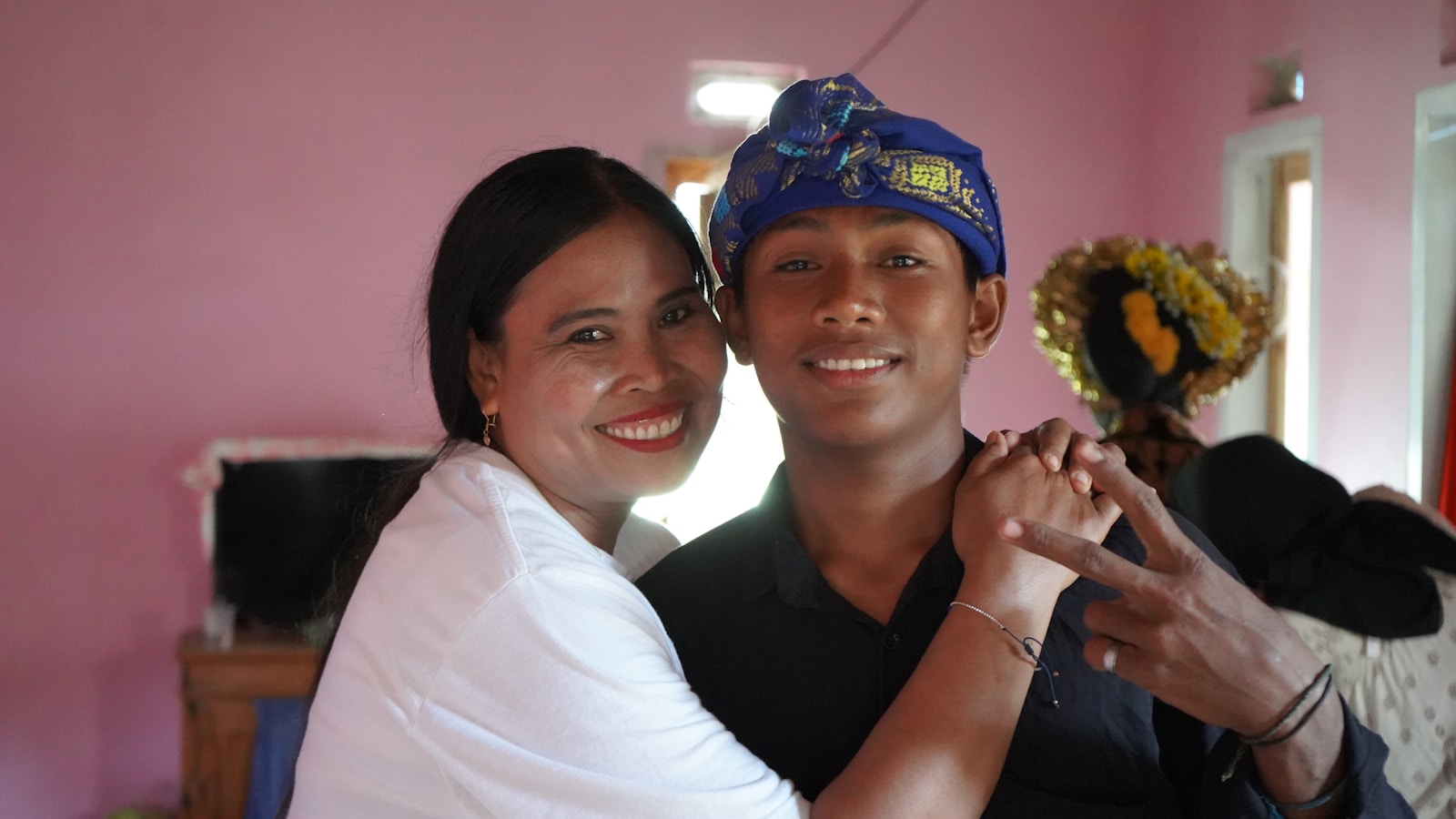
hermana

sister
The Spanish word 'hermana' is used to refer to a sibling who is female. Just like in English, it can refer to a biological sister or be used more broadly for a female member of a religious community or someone who you feel a close bond with.
Example sentences using: hermana
La hermana de María es muy bonita.

Maria's sister is very beautiful.
In this example, 'La hermana' means 'The sister'. The sentence is referring to someone’s sister in a given context. Here, the context is Maria.
La hermana de Juan está enferma.

Juan's sister is sick.
In this example, 'La hermana' is used to denote someone’s sister. In this case, the sister of Juan.
Mi madre y la hermana de mi papá son mejores amigas.

My mother and my father's sister are best friends.
Here the phrase 'La hermana' is used to show the familial relation, pairing 'La hermana' with 'my father' to denote aunt.
La hermana de Luis vive en Madrid.

Luis's sister lives in Madrid.
In this instance, 'La hermana' refers to the sister of someone named Luis, who lives in Madrid.
La hermana de Pedro tiene un gato.

Pedro's sister has a cat.
In this example, 'La hermana' indicates a sibling relationship. More specifically, it refers to the sister of Pedro who owns a cat.
La hermana de Javier cocina muy bien.

Javier's sister cooks very well.
In this sentence, 'La hermana' refers to the sister of a person named Javier. It is used to express that Javier’s sister has good cooking skills.
La hermana de Carlos es profesora.

Carlos's sister is a teacher.
This instance of 'La hermana' is referring to the sister of Carlos. The phrase also shares information about her profession, which is a teacher.
La hermana de Ana es más alta que ella.

Ana's sister is taller than her.
In this example, 'La hermana' is used to denote the sibling relationship between Ana and her sister, who is taller than Ana.
Mi hermana es bonita.

My sister is beautiful.
This is a simple sentence in Spanish which indicates the speaker’s sister is attractive. 'Mi' is possessive and translates to 'my', 'hermana' means 'sister', 'es' is a form of 'to be' and 'bonita' translates to 'beautiful'.
Tu hermana está en la escuela.

Your sister is at school.
This sentence means the person you are addressing has a sister who is currently at school. 'Tu' means 'your', 'hermana' means 'sister', 'está' is a form of 'to be', and 'en la escuela' means 'at school'.
Mi hermana tiene dos años.

My sister is two years old.
This sentence communicates the age of the speaker's sister. 'Mi' means 'my', 'hermana' means 'sister', 'tiene' means 'has or is in this context', and 'dos años' means 'two years'.
La hermana de Juan es médico.

Juan's sister is a doctor.
This sentence tells us the profession of Juan's sibling. 'La hermana de Juan' means 'Juan's sister' and 'es médico' means 'is a doctor'.
Mi hermana y yo somos gemelas.

My sister and I are twins.
This phrase tells us the speaker and their sister are twins. 'Mi hermana y yo' means 'my sister and I', 'somos' means 'are', and 'gemelas' means 'twins'.
No veo a mi hermana desde hace un año.

I have not seen my sister for a year.
This sentence communicates that the speaker hasn't seen his/her sister for a year. 'No veo a mi hermana' means 'I have not seen my sister' and 'desde hace un año' means 'for a year'.
El coche de mi hermana es azul.

My sister's car is blue.
This sentence tells us about the color of the sister's car. 'El coche de mi hermana' means 'my sister's car' and 'es azul' means 'is blue'.
Mi hermana vive en Madrid.

My sister lives in Madrid.
This sentence shares the information that the speaker's sister resides in Madrid. 'Mi hermana vive en' means 'My sister lives in', and 'Madrid' is a city in Spain.
Mi hermana tiene un gato.

My sister has a cat.
In this sentence, the speaker is letting us know that their sister owns a cat. 'Mi hermana tiene' translates to 'my sister has', and 'un gato' means 'a cat'.
La hermana mayor de Pedro es maestra.

Pedro's older sister is a teacher.
This phrase tells us about the profession of Pedro's elder sister. 'La hermana mayor de Pedro' means 'Pedro's older sister', 'es' means 'is', and 'maestra' means 'teacher'.
La hermana de Pablo estudia en la universidad.

Pablo's sister studies at the university.
In this example, 'La hermana' is used to indicate the sister of Pablo. The sentence additionally provides information about her education, stating that she studies at a university.
La hermana de Raquel juega al fútbol.

Raquel's sister plays football.
In this sentence, 'La hermana' denotes Raquel’s sister. The phrase also mentions that Raquel's sister plays football.